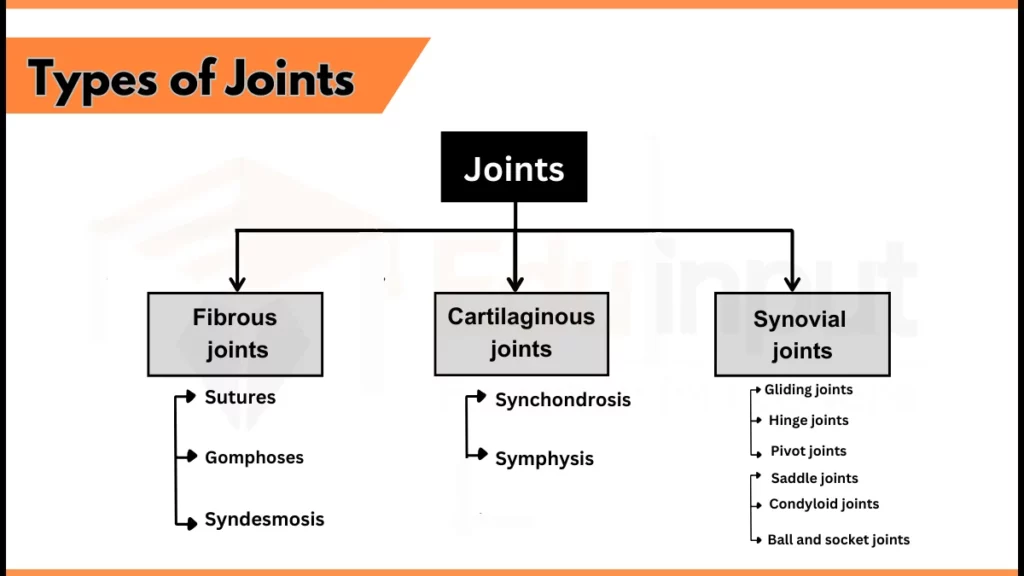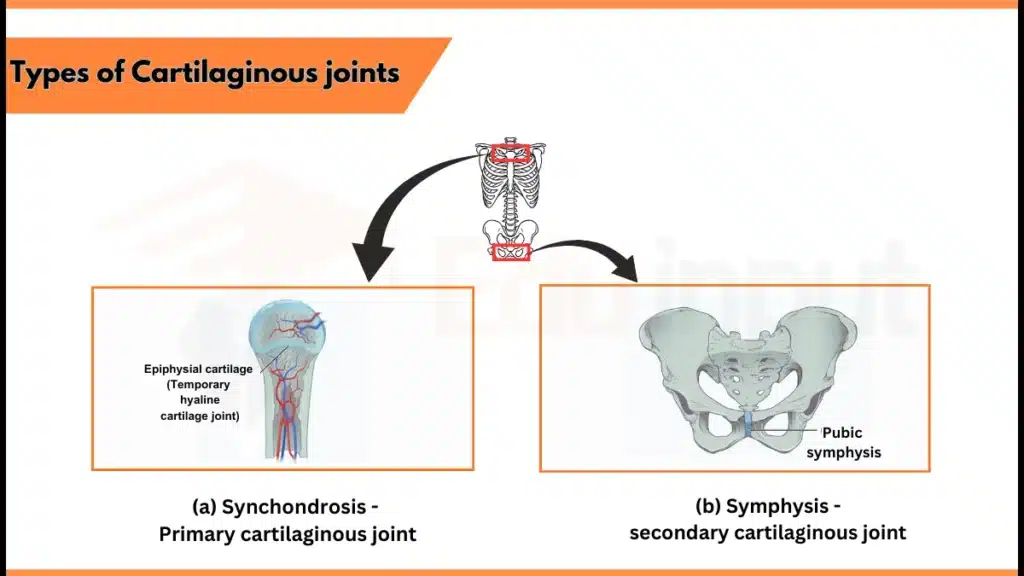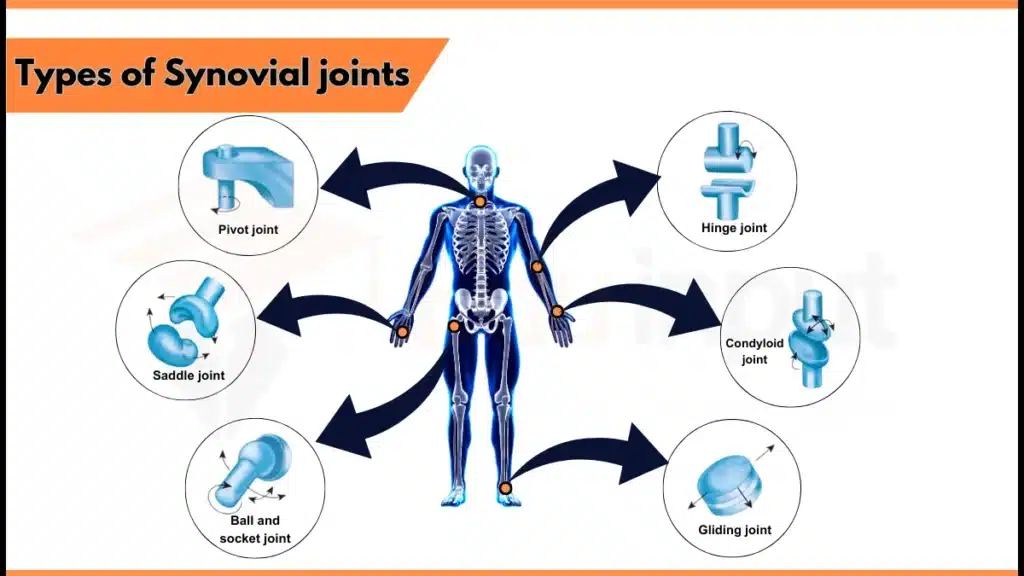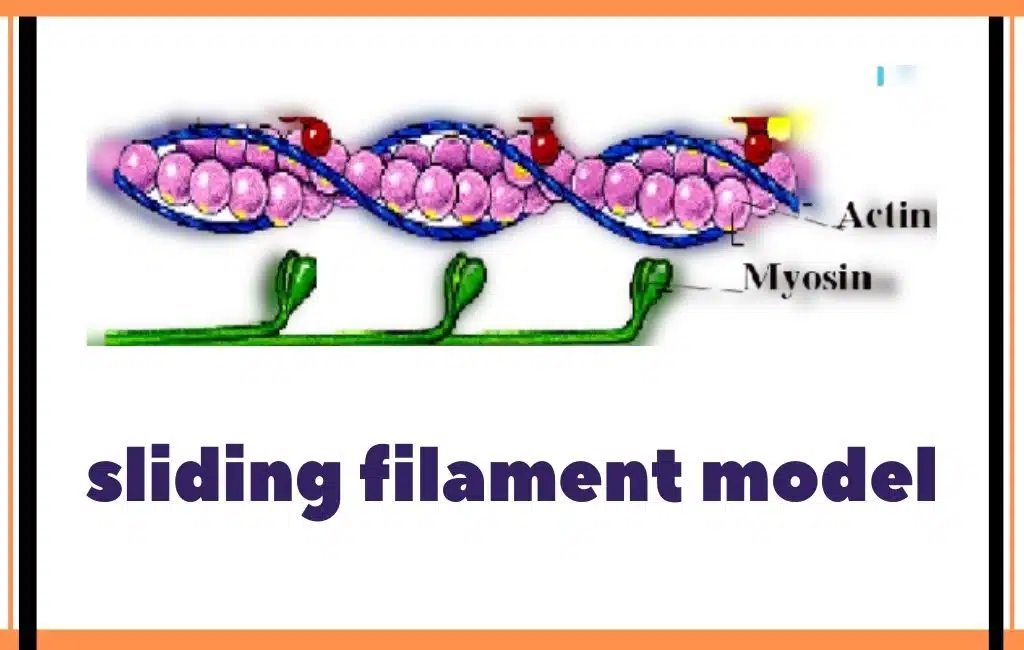Joints- Definition, Anatomy, Movement, & Types
What are joints?
“The place in your body where two bones meet, is known as a joint.” It can also be defined as a connection between two bones, which allows movement.
Joints are the important part of human skeletal system, as they provide support and flexibility to your whole body. All joints help you move your body from head to toe. For example, joints such as the knee, elbow, and shoulder are self-lubricating. They allow smooth, almost frictionless movement, and support heavy loads easily.
Anatomy of joints
Joints are made up of a few key components that connect them together.
- Cartilage – A smooth, flexible tissue that covers the ends of bones in joints and reduces the friction.
- Ligaments – Strong, fibrous tissues that connect bones together, providing stability and controlling movement to prevent injury.
- Tendons – Link your muscles to bones and allow bones to move as muscles tighten and relax. Injury, aging and various health conditions (like arthritis) can harm your tendons.
- Synovial Membrane – A thin lining inside the joint capsule, which produces synovial fluid to lubricate the joint.
- Joint Capsule – A tough, outer covering that surrounds synovial joints, and protects the joint structure.
Types of Joints
Joints are classified into different categories on the basis of:
- Their movement
- Their structure

Types of Joints by their Movement
On the basis of function and movement, joints are classified in three groups:
1. Synarthroses (immovable)
These are fixed or fibrous joints. They involve two or more connected bones that have no movement. Skull bones are an example of immoveable joints.
2. Amphiarthroses (slightly movable)
They are also known as cartilaginous joints, that allow a little movement. They provide stability and some motion. Vertebrae of the spine have amphiarthroses joints.
3. Diarthroses (freely movable)
Also known as synovial joints. They can move freely in multiple directions, and are the most common joints in your body. Examples include knee and shoulder joints.
Types of Joints by their Structure
Joints are classified into three categories based on the amount of connective tissues in their structure:
- Fibrous joints
- Cartilaginous joints
- Synovial joints
1. Fibrous Joints
Fibrous joints are types of joints where bones are connected together by tight, fibrous connective tissues. They are not flexible, which means they allow very little or no movement.
Fibrous joints contain connective tissues rich in collagen fibers. These fibers are tightly twisted together, creating a strong, dense structure. This helps to maintain the stability in body especially where movement isn’t needed. Examples of fibrous joints include skull (prominently), upper jaw, backbone, rib cage, and pelvic bone.

Fibrous joints are further classified into three sub-types:
a) Sutures
These are immoveable joints in the skull. At birth, the sutures are slightly flexible, which helps the baby’s head pass through the birth canal and allows brain growth after birth. They allow limited movement until around 20 years old, after which they become fixed and immoveable.
b) Gomphoses
These are immoveable joints, present between the teeth sockets in the upper jaw (maxilla) or lower jaw (mandible). They fix the teeth in their place.
c) Syndesmosis
These are slightly moveable joints. There’s a ligament that connects two bones, allowing for a little movement. Example includes the joint between the tibia (shin bone) and fibula (calf bone). Another example of gomphoses joint is Ulna and radius bones.
2. Cartilaginous joints
These are the places where two bones are connected with a smooth hyaline cartilage, along with a tight fibrocartilage layer. Mostly they have some movement, but don’t move in many directions.

There are two sub-types of cartilaginous joints:
a) Synchondrosis – (primary cartilaginous)
In synchondrosis, bones are connected entirely by hyaline cartilage. These joints are immoveable, present in young children temporarily, and last until the end of their puberty. The joint between the first pair of ribs and the sternum is an example of synchondroses.
b) Symphysis – (secondary cartilaginous)
A Symphysis consists of a flexible fibrocartilaginous layer that connects two bones. These joints allow a slight movement. Examples include pubic symphysis (between hip bones), and the joints between vertebral bodies.
3. Synovial joints
Synovial joints are the most flexible joints as they provide a free movement. These are filled with a synovial fluid and enclosed in a tough capsule. The fluid in them acts as a lubricant, reducing friction between moving bones.
Synovial joints allow movement, rotation, and sliding. These are usually supported by ligaments around them, which help limit movement and prevent injuries. The range of movement depends on the joint type and the ligaments, that join the bones together. Limb joints, neck joint, shoulder joint, knee joint, are some examples of synovial joints.

There are six sub-types of synovial joints:
a) Gliding joints
Gliding joints are also known as plane joints. They involve flat bones, that can slide over each other smoothly without rotating. These joints allow bones to move in different directions on a single plane. Examples include, the joints in the wrists, ankles, and between the vertebrae in the spine.
b) Hinge joints
Hinge joints work like a door hinge, allowing movement in just one direction (such as bending and straightening in a single plane). Examples of hinge joints include the finger, elbow, and knee joints.
c) Pivot joints
A pivot joint allows rotation without the bones moving out of their original position. In the neck, the atlas and axis bones have a pivot joint, which helps us turn our head.
d) Saddle joints
A saddle joint is a biaxial joint, that allows movement in two directions: back-and-forth & side-to-side. E.g. In the hand, the thumb’s saddle joint helps it move across the palm and enables it to touch the fingertips.
e) Condyloid joints
Condyloid joints allow movement in two planes: up-and-down and side-to-side, but does not allow rotation. Examples include, the wrist joint between the radius and the carpal bones, the base of the index finger, and the finger joints (where fingers connect to the hand).
f) Ball and socket joints
Ball and socket joint is a freely moving joint, that can rotate and turn in any direction. It is found where a ball-shaped rounded bone fits into the cup-like cavity of another bone. Shoulder and hip joints are the perfect examples of ball and socket joints.







Leave a Reply